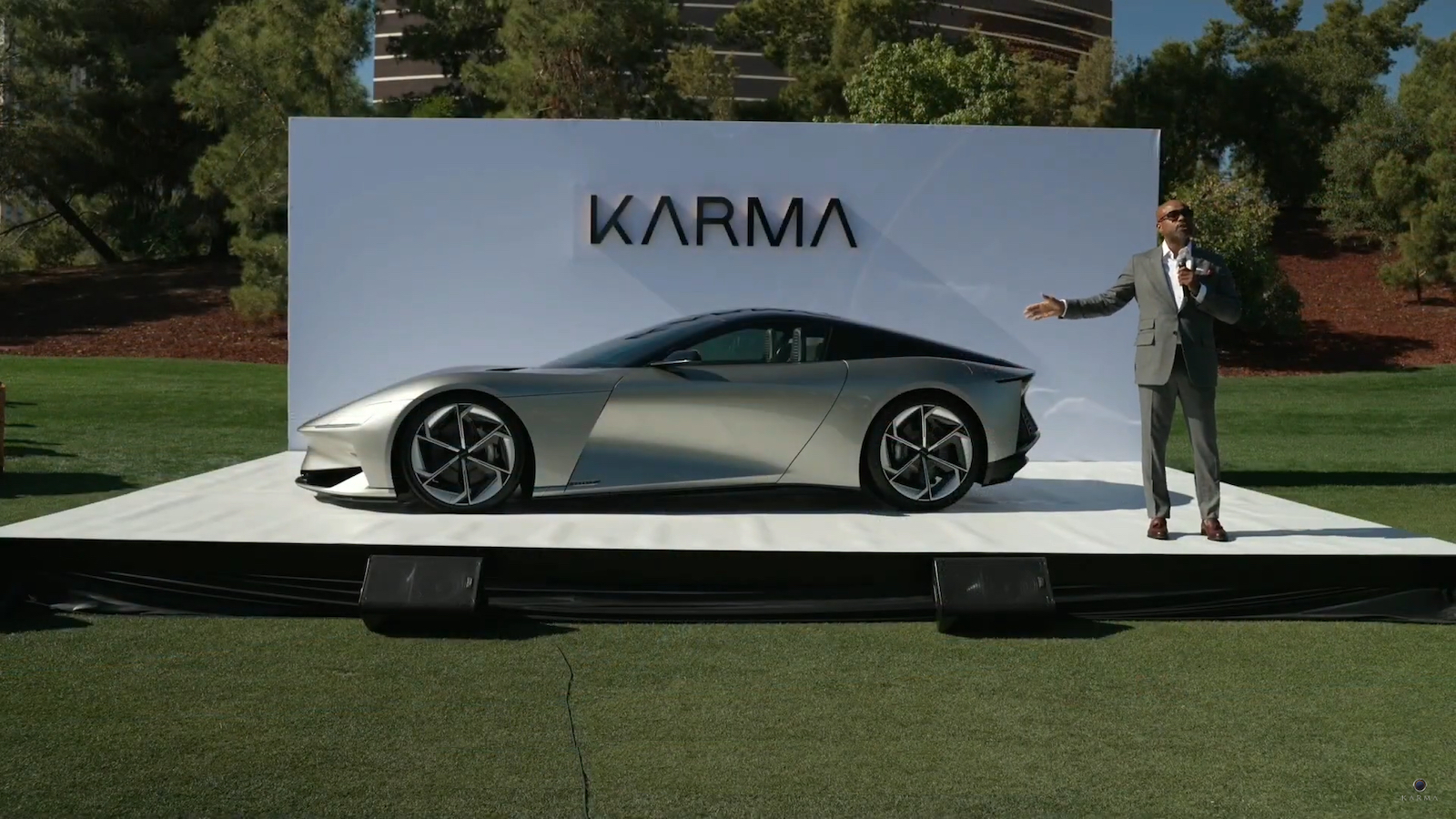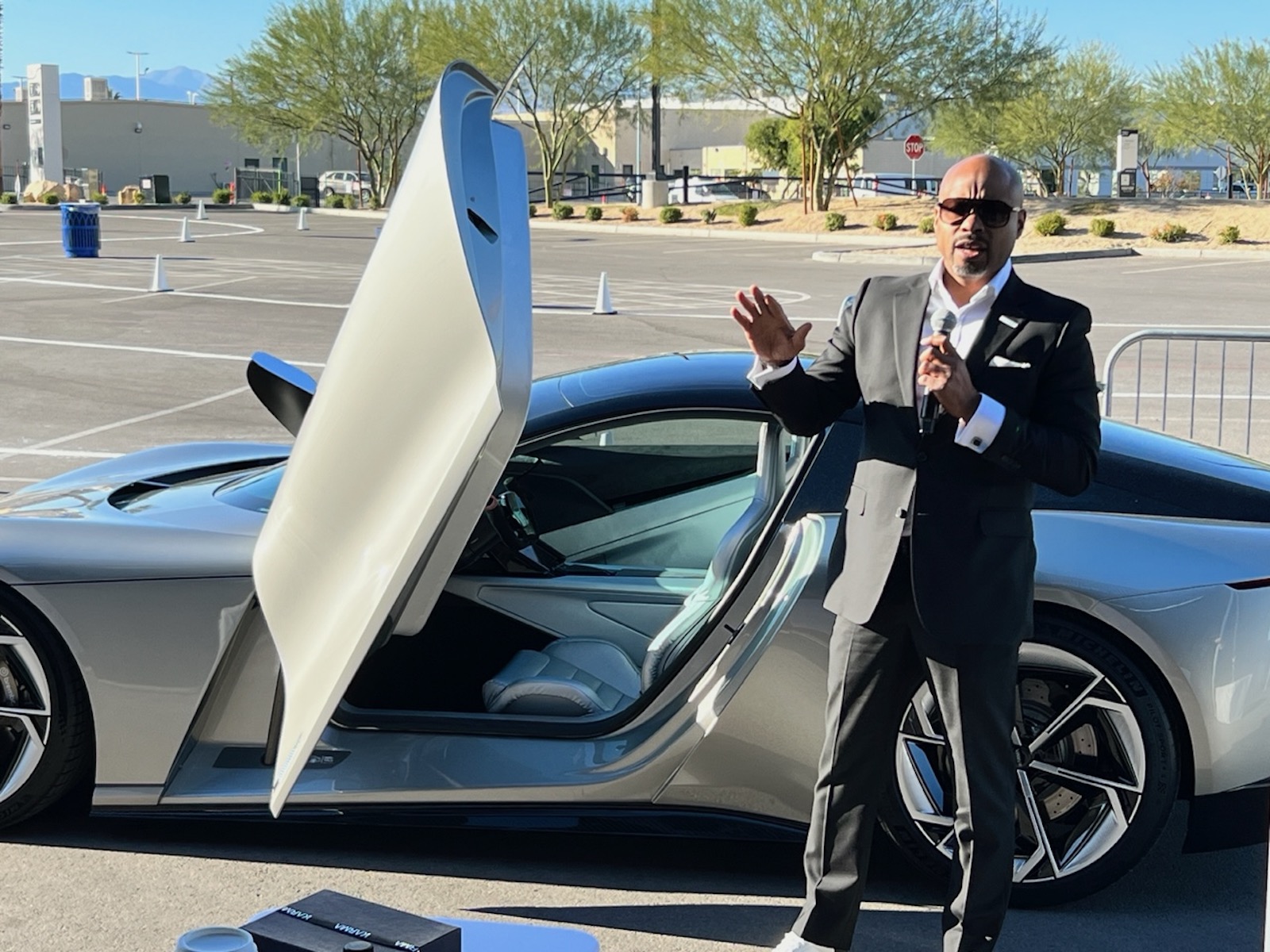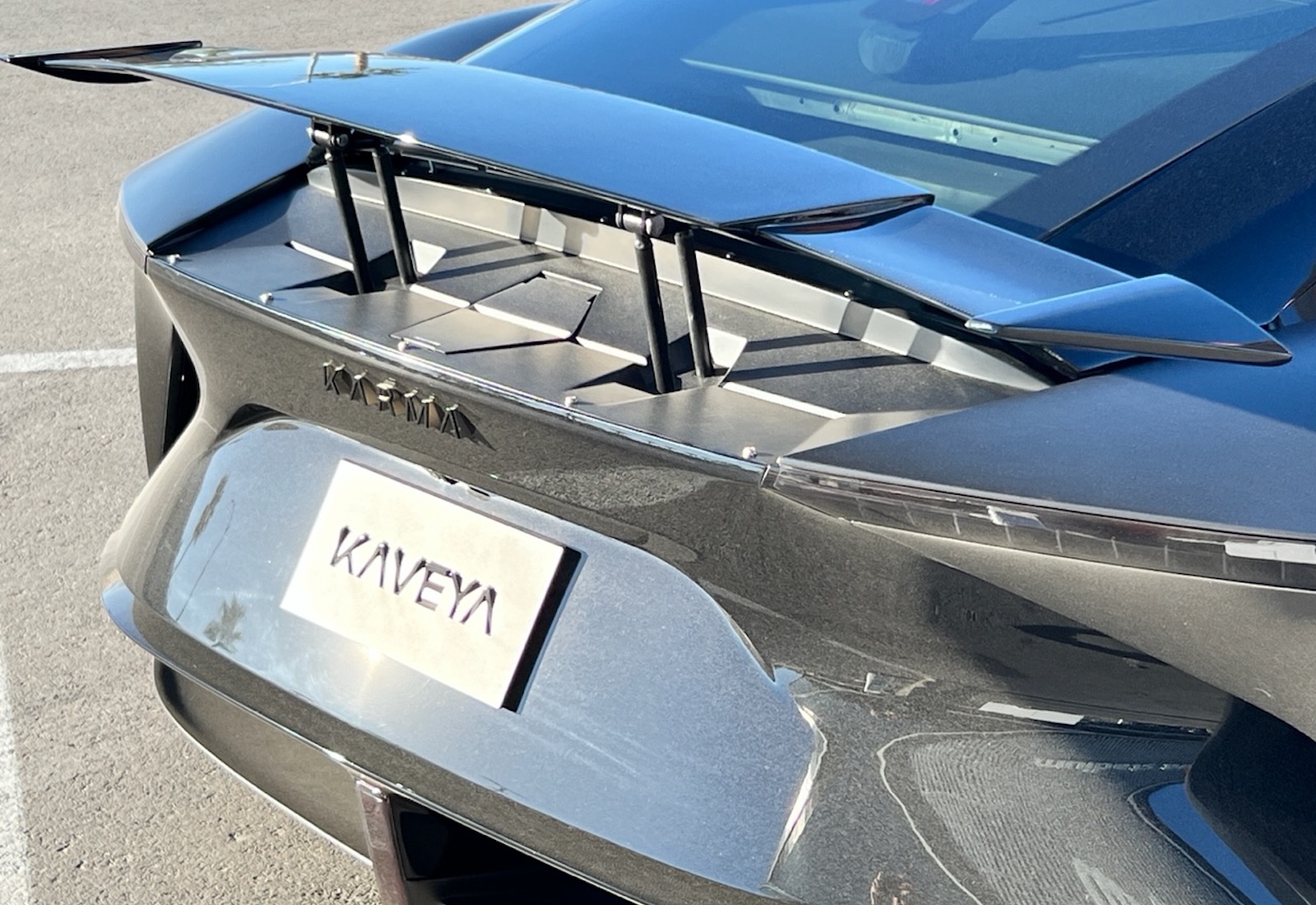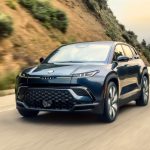Karma Automotive’s new president, Marques McCammon, talks with Headlight.News about the up-and-down company’s future, particularly its new product making its debut at the LA Auto Show in the coming days. Find out more about the company’s new leader and its product portfolio.

The reveal of the all-electric Karma Kaveya is the pinnacle of the company’s shift to an all-electric lineup under new president Marques McCammon.
Back in April, Wanxiang America, the owners of Karma Automotive, named veteran automotive executive Marques McCammon as President. McCammon wasted no time in putting his stamp on the company, halting sales and preparing for a relaunch with an entirely new product.
McCammon has three decades of experience in the transportation field, specializing in product development and software-based automotive product advancement, manufacturing, as well as commercial and strategic leadership.
Educated at North Carolina A&T State University and the University of Michigan-Dearborn, he initially worked in powertrain development with the then-Chrysler Corp. and later helped kick-start the SRT performance marque after the Daimler-Chrysler merger. He has also worked for ASC, Saleen and electric car startup Aptera.

After being named Karma’s president, McCammon immediately shifted the company’s focus to all-electric vehicles.
“I told my first recruiter at Chrysler that my career goal was to run a startup auto company,” said McCammon. “With Karma, that dream has come true. The business is at a crucial turning point, but the foundation has already been created by our elegant plug-in electric GS-6. Now it’s up to my team and me to reinvigorate our brand and to create and implement alternate paths to revenue”
For its part, Wanxiang is a Chinese Tier 1 parts supplier to the automotive industry. The company has operated in the United States since 1994, and it purchased the assets of bankrupt Fisker Automotive in 2014. Wanxiang relaunched the company as Karma Automotive in 2018.
About the Karma Kaveya
Headlight.News caught up with McCammon at a press preview event for the all-new 2025 Karma Kaveya EV. The Kaveya, which was officially unveiled at the LA Auto Show today, is an all-electric sports coupe with bodywork made of carbon fiber.
The Kaveya has a range of more than 250 miles, a top speed of 180 mph, and a 0-60 time under 3 seconds. Total system horsepower for the Kaveya is 1180, with 1270 pound-feet of torque. Pricing for the Kaveya has not been announced.
McCammon is launching the Kaveya at a tough time for the EV industry and for Karma. The company sold just one car worldwide in October, down from four cars in September. Headlight.News met with McCammon to talk about where he thinks the company can go from here. The interview has been edited for clarity and brevity.
Headlight.News: EV sales are having a tough time lately, and Karma’s sales are tougher than most. What’s going on with your company?

The Kaveya has a range of more than 250 miles, a top speed of 180 mph, and a 0-60 time under 3 seconds.
McCammon: When I first got to the company, we had production going. I stopped it. I wasn’t satisfied with our quality metrics. I wasn’t satisfied with the connection between engineering and manufacturing. I said, ‘we’re going to end up putting out a product that we have to pull back, so I’d rather not do it, and we’re going to stop and we’ll reset when I think I’m ready.’
I said, ‘take whatever’s out there left to sell it, and then we’ll start fresh.’
HN: What makes you think the new Kaveya will be successful where companies like Mercedes-Benz are having trouble with the premium EV market?
McCammon: Most of the market in EV is playing at about $120,000 and down, ours is about $140,000 and up. What we see in that market space is over the past 10 years, that segment has been increasing in volume year on year. For me, it’s less about the fact that I’m EV and it’s more about the fact that I’m picking a technology that gives my customer a great experience. The customers in that space are looking for exclusivity. They’re looking for a level of customization, and they’re looking for technology that’s true to the brand’s character.
For example, in Ferrari, it’s about engine technology. For Aston Martin, it’s luxury. It’s a kind of hybrid between the two for McLaren. Each brand has their own character. For us, we are a GT car, but we’re American and we’re California. So in that regard, I don’t think I’m competing with the noise that’s happening right now
HN: Right now, relations between the United States and China are tenuous and more than a little bit fraught. Do you have concerns about being a Chinese-owned company in America?

McCammon’s worked for a variety of automakers and suppliers, but becoming president of Karma helped him fulfill a longtime goal: leading a startup.
McCammon: I don’t. I did a lot of diligence before I joined the company. One of the things that made me comfortable is the Chinese company that owns us has been actively working in the U.S. for 27 years as a parts supplier to every major OEM. The chairman was inducted into the Automotive Hall of Fame. The company has employed tens of thousands of people in the U.S. and consistently does. If you look at the investment portfolio of most public companies, they have China, they have Dubai, they have the Middle East, Europe, and so on. It’s not much different because the day-to-day operations are on me. So right now I don’t really foresee an issue.
HN: Where will the Karma Kaveya be made?
McCammon: Moreno Valley, California. It will be designed here and built here. Every Karma is built either at our prototype facility at our headquarters building in Irvine or at our manufacturing facility in Moreno Valley, which is an hour away.
HN: Even though they’re made in America, at the Karma price point the cars are not eligible for any tax credits. Is that something that you hope to change or is that something that you’re building into your business plan?
McCammon: If that’s made available to us, then we will utilize it. But frankly, I think that those tax credits are really to drive adoption in mass market. Frankly, I think that’s where it should be deployed. But for our customers, they’re more affluent. I don’t necessarily think that I need to spend a lot of time lobbying for them. Honestly, I think it’s almost unfair in a broader economic sense for them to take any of that benefit.
The way that I support the mass market is all of the tier ones have R&D projects that they’re working on right now. There is new technology going in every corner of the auto industry, but what always happens is when it comes time to take it to mass production, nobody wants to be first. I have the ability to be first in a production environment with real customers, with a real dealer network, with real supply chain, and I can validate technologies that can then move to the mass market. I want to be an elegant Guinea Pig for the industry.
HN: Where do your batteries come from?
McCammon: We buy batteries from different manufacturers, but we integrate our own packs. There’s art and science in the chemistry of the cell, and then there’s art and science in the integration of the pack. Right now our focus is on the integration of the pack, but we’re doing joint R&D on everything from conventional cell chemistries to solid state. Our thing is, again, I want to be able to pilot them early and pilot them first. I’m not going to make grandiose promises until I know that the technology has got a degree of credibility. I believe Toyota will make their solid-state battery, and my guess is that they’ll probably pilot it much like they did with fuel cells in the Mirai. If that’s the way that the market moves, I will be in those pilot volumes. I could make it a good business, validate it, give data back to the market, and help everyone get better.
HN: Getting back to the finances, since Karma is backed by the big Chinese parts company, is funding an issue, or do you have enough budget to get all this done?
McCammon: That was a prerequisite for me when I started. I sat down and had a conversation with the shareholder and we aligned on the ultimate vision. The chairman bought the assets from Fisker and founded Karma because he said, ‘I’ve built this huge parts conglomerate and I want to leave something positive in the market.’ So our view is that we can be the inspiration of decarbonized transport. Our idea is, what if we just made people fall in love with EVs? What if people loved BEVs because they were so beautiful and so fast and so fun and so enjoyable? Then the whole conversation is different. I said, ‘I’m going to give you milestones that you can measure me by every quarter, every year, and every five years. If I hit those, then you commit to me that you’ll do this with us. They said, ‘That’s not a problem at all.’






0 Comments